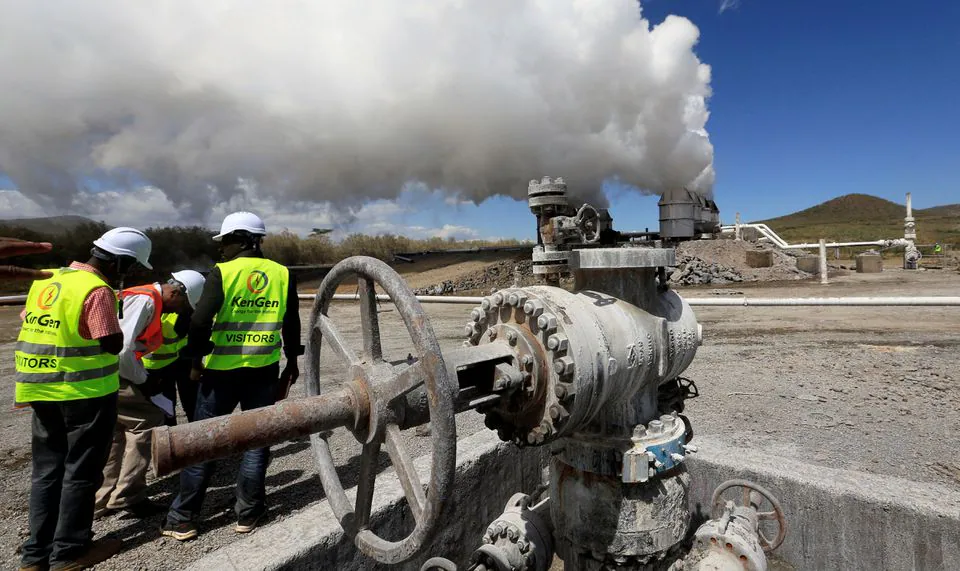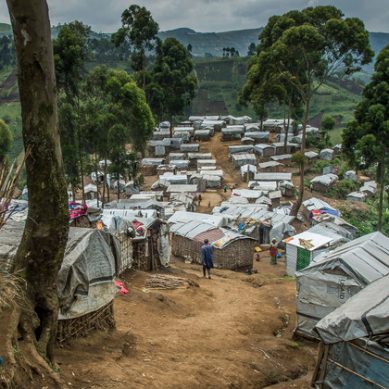
Near the Kenyan town of Naivasha in the East African Rift Valley, a small army of machines is slowly being assembled. Their appearance, resembling air conditioning units, is inconspicuous, but their mission is of potentially epochal importance: to suck carbon dioxide from the atmosphere, so it can be mineralised and stored forever deep below the surface of the Earth.
One hundred of these machines, each designed to remove 10 metric tonnes of CO2 annually, will begin operating next year in the world’s second largest pilot of direct air capture (DAC) technology. The effort, known as Project Hummingbird, is being developed by two startups, Octavia Carbon, which is building the DAC machines, and Cella Mineral Storage, which will inject mineralised carbon deep into the Rift Valley.
The two companies are convinced they have come to the right place to test and scale carbon capture and mineralisation technologies.
“There is no other place in the world like Kenya to build a direct air capture industry,” says Martin Freimüller, Octavia Carbon’s chief executive. He cites the geological conditions along the Rift Valley, which lend themselves to storing mineralised carbon, along with its abundant supply of geothermal energy as key reasons for launching his venture in Kenya.
And geothermal energy provides heat as well as power. Freimüller says that waste heat from geothermal plants will regenerate the filters in Octavia Carbon’s DAC machines and cover 85 per cent of their energy requirements. This will help the company achieve “uniquely low operational expenditure”, he says.
Freimüller adds that the DAC industry can grow symbiotically with geothermal energy production. Kenya has “a lot of geothermal capacity but doesn’t have enough demand for that yet”, he says. DAC companies can be anchor off-takers for geothermal projects, “which is great for the geothermal producer because it makes their projects so much more bankable.”
The techniques employed by companies like Cella Mineral Storage in mineralising carbon essentially involve speeding up chemical processes that would naturally take several thousand years.
“What we’re doing is the most permanent form of CO2 removal,” says Corey Pattison, Cella’s chief executive. “We are chemically converting CO2 from a gaseous state into a carbonate mineral, so it is permanently stored.”
As part of Project Hummingbird, Cella will inject CO2 into water and then pump it into the Rift Valley’s porous basaltic rock. Its techniques aim to maximise water efficiency, given the arid conditions in the region.
From a commercial point of view, mineralisation has important advantages for companies seeking to earn revenue through the sale of carbon credits.
“We can tell our customers how many grammes of CO2 were actually taken out of the atmosphere and then tell them that those are stored for millions of years,” says Freimüller. “It is very clear that the reassurance that customers can have buying direct air capture credits is unlike any other credits.”
Freimüller adds that Octavia Carbon will become the first DAC company to be certified through the geologically stored carbon methodology developed by carbon credits platform Puro.earth. This, he says, will be a “crucial distinction on quality”, helping to justify the much higher cost compared with credits from nature-based alternatives.
The company has already begun offering pre-purchase carbon credits. Swedish payments company Klarna is among those who have announced their intention to purchase credits from Project Hummingbird.
Project Hummingbird, by itself, will make very little difference: the 1,000 tonnes a year it will remove when it begins operating are but a tiny drop in the great ocean of carbon that continues to pour into the atmosphere. There is no scientific consensus on exactly how much carbon will need to be removed through techniques such as DAC for the world to reach net zero, but estimates run into the billions of tons each year.
Scaling up direct air capture in Kenya will not be easy. The biggest challenge, Freimüller says, is securing financing. He warns that many investors are deterred by the perception that companies operating in Africa are inherently exposed to higher risks than in developed markets.
Even so, the scale of the Rift Valley’s potential to become a powerhouse for carbon capture and storage is hard to ignore. Kenyan entrepreneur James Mwangi is seeking to facilitate industrial hubs along what he calls the “Great Carbon Valley”; each hub would be anchored by a DAC plant and powered through geothermal energy.
Swiss company Climeworks, which said in September that it and its storage partner Carbfix would work with Puro.earth to certify their carbon dioxide removal service, separately announced a collaboration to explore the development of a large-scale carbon capture and storage project in Kenya with Mwangi’s venture.
Kenya’s geology is similar to Iceland’s, where Climeworks operates the world’s only operational DAC facility.
The region “provides an ideal potential home for scaling the latest and most ambitious of climate technologies”, said Mwangi in a TED talk last year. “Introducing DAC and other energy-hungry climate technology into places like the Rift Valley would give them the space and capacity they need to really scale to planetary levels.”
Pattison agrees that Kenya provides the ideal conditions to optimise mineralisation techniques, which could ultimately have a wide range of uses around the world. The progress being made in Kenya demonstrates that “technologies don’t need to be transferred from the Global North to the South,” he says. “The Global South can be really an important part of the solution.”
- A Reuter report











